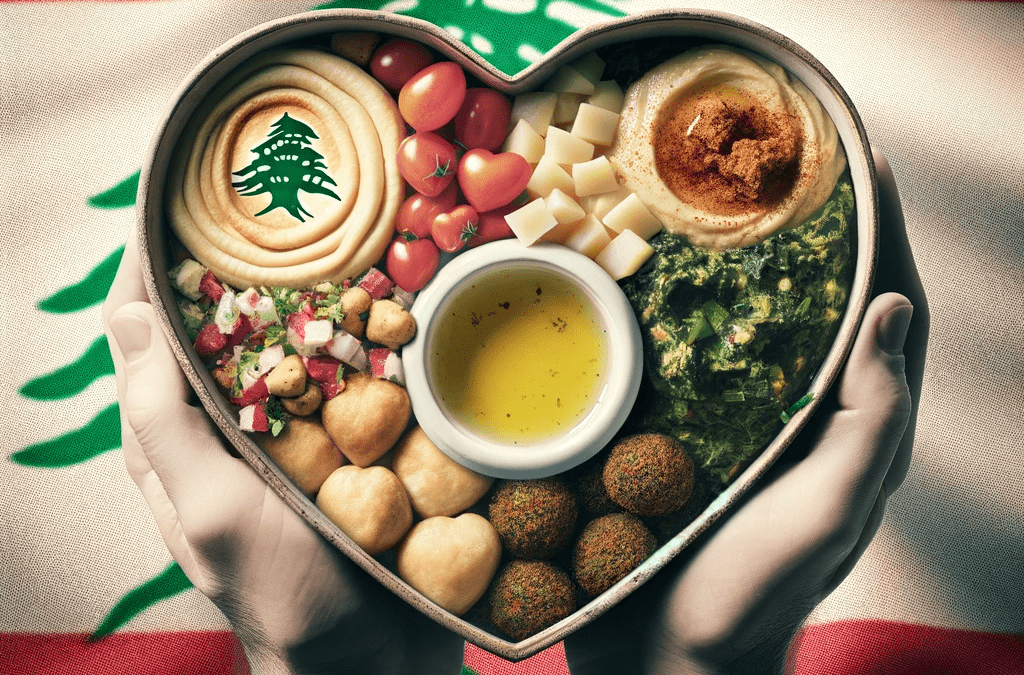
by ceb16 | Nov 22, 2025 | Visualization
Lebanon’s economic collapse has slowly reshaped everyday life, but nowhere has the crisis felt more personal than in the price of food. For years, Lebanese households lived with relatively stable costs, where a grocery list looked more or less the same from one month to the next. But as the currency began losing value, that balance shattered, and the cost of essential goods started rising in ways no one could ignore.
To understand just how severe this shift was, I looked at the Consumer Price Index (CPI) from 2000 to 2024 – specifically comparing Food CPI with the General CPI. The visualization embedded below helps reveal the full story behind the surge.
For almost two decades, both lines lie nearly flat. Prices were predictable. Inflation existed, but it was slow and manageable. Then, around 2019-2020, everything changed. As the Lebanese pound depreciated, overall inflation began climbing steadily. But food prices did not simply follow that upward trend – they broke away entirely and started rising at a much steeper, more dramatic rate.
In the highlighted portion of the visualization, the gap between the two lines grows quickly and aggressively. General CPI increases significantly, but Food CPI skyrockets. This divergence reflects more than numbers: it captures the moment when essential goods became unaffordable for many families. Imported food items, already sensitive to exchange-rate fluctuations, adjusted more slowly at first and then surged as sellers fully priced goods in dollars. What used to be routine purchases suddenly became financial shocks, forcing households to change diets, reduce quantities, or shift to cheaper alternatives.
This widening gap explains why the crisis is felt most intensely in the supermarket aisle. Food, being a daily necessity, exposes the full weight of inflation in a way other categories cannot. The data reveals that while inflation affected every part of life, it was food prices that redefined the crisis for Lebanese people.
Understanding this pattern is crucial because it highlights where intervention is most needed. Transparent pricing, stable exchange rate mechanisms, and stronger support for local production can reduce vulnerability to future shocks. The visualization makes one thing clear: when food prices rise much faster than everything else, the impact is immediate, widespread, and deeply human.
Lebanon’s inflation story is still unfolding, but recognizing how and why food prices broke away from the general trend is an important step toward rebuilding stability. The gap in the chart is more than a statistical difference – it represents the lived reality of households trying to keep up with a crisis that reshaped even the most basic necessities.
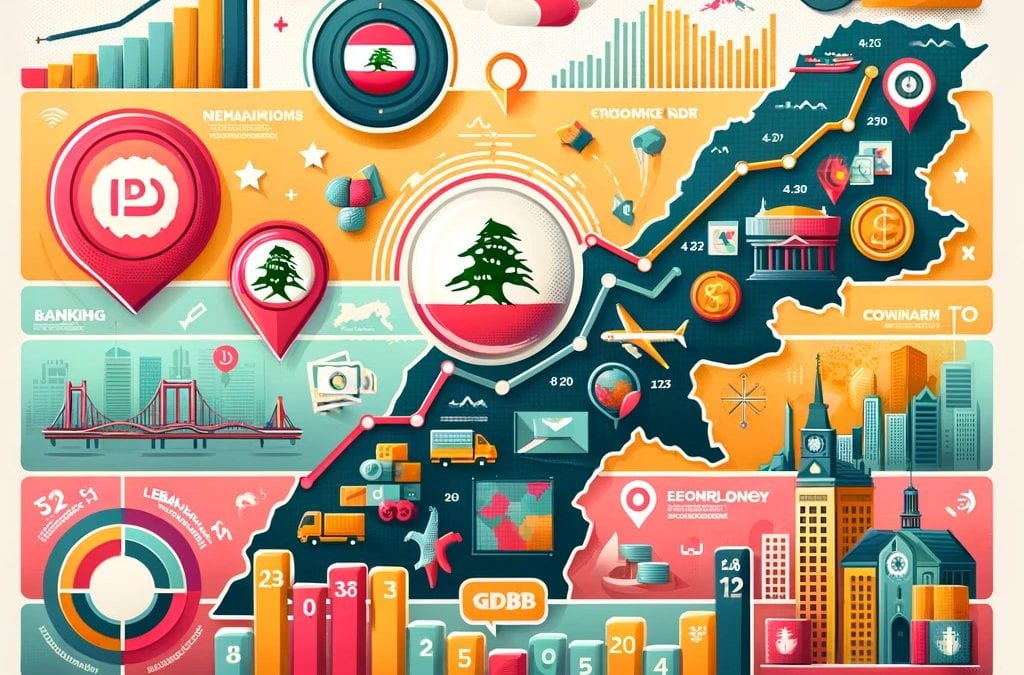
by mhh76 | Nov 20, 2023 | Uncategorized
In a world where economic resilience is more crucial than ever, Lebanon stands as a testament to the enduring spirit of overcoming adversity. This blog post is a reflection and expansion of those insights, exploring how we can collectively work towards a more robust economy.
The Prelude: Reflecting on Lebanon’s Past Economic Successes
Our journey begins with a look back at Lebanon’s economic landscape, particularly around 2007 and 2008. During these years, Lebanon witnessed a remarkable phase of economic growth, thanks in large part to the collaborative efforts of the government, the central bank, and, crucially, the citizens. This era serves as a beacon of hope and a blueprint for what can be achieved through collective action and strategic economic planning.
The Current Scenario: Understanding the Crisis
Fast forward to the present, and the picture is starkly different. Lebanon faces significant economic challenges, marked by a steep decline in GDP growth, particularly post-2018. The data paints a troubling picture: negative growth rates and a plunging gross domestic savings rate. These indicators are more than mere numbers; they are a reflection of a nation grappling with economic instability.
The Interplay of GDP and Savings: A Dual Focus
A key focus of our analysis is the interplay between GDP growth and savings. A thriving economy typically boosts savings, but the reverse is also true: economic downturns lead to decreased savings due to increased expenditures or borrowing. Lebanon’s current situation, characterized by a combined decline in GDP growth and savings, signals a need for urgent, targeted economic interventions.
Tackling the Crisis: Recommendations for Economic Improvement
The core of our discussion revolves around actionable recommendations to improve Lebanon’s economy. Drawing from past successes and current challenges, these recommendations include:
- Fostering Government and Central Bank Collaboration: Just as in the past, strong cooperation between these entities is vital for implementing effective economic policies.
- Empowering Citizens: Encouraging entrepreneurship, supporting local businesses, and fostering a culture of economic literacy can help citizens contribute more effectively to the nation’s economy.
- Strategic Economic Planning: This involves revisiting fiscal policies, exploring new avenues for economic diversification, and investing in sectors that can drive sustainable growth.
Conclusion: A Call to Action
As we stand at this critical juncture in Lebanon’s economic history, it’s imperative that we learn from our past, understand our present, and actively work towards a better future. The journey ahead is fraught with challenges, but also filled with opportunities for growth and resilience. It’s a journey that requires the collective effort of every Lebanese citizen, policy-maker, and stakeholder. Together, we can steer Lebanon towards a path of economic recovery and prosperity.

by hhd19 | Nov 19, 2023 | Dashboard
Introduction:
In the dynamic world of economics, trade balances play a pivotal role in determining a country’s financial health. This visualization offers a clear and concise representation of Lebanon’s trade situation over the recent years, focusing on the comparison between the exports and imports of goods and services as a percentage of GDP.
Context:
Lebanon, a country with a rich trading history, has faced various economic challenges exacerbated by political instability and global market fluctuations. Understanding the trade trends is crucial for policy-makers, businesses, and academicians to assess the country’s economic resilience and to strategize for future growth.
These pie charts are a visual summary of the economic challenges faced by Lebanon in terms of trade. They underscore the need for strategic planning and diversified economic reform to build a more balanced and self-sufficient economic structure.
In 2019, the pie chart illustrates that imports considerably outweighed exports, indicating a trade deficit. This imbalance suggests that the country was consuming more than it was producing for external markets.
2020 shows a slight shift with the reduction in imports and a marginal increase in exports. This change could be indicative of various factors, such as a change in economic policy, a response to external economic pressures, or the impact of the global events of that year, like the COVID-19 pandemic.
By 2021, the gap between imports and exports continues to persist, although there’s a noticeable improvement in the trade balance, with exports comprising a larger section of the pie.
Problem:
Lebanon is grappling with a trade deficit.
Solutions:
1- Diversification of Exports: Investing in diverse sectors to increase the range of goods and services for export.
2- Improving Domestic Production: Enhancing the quality and quantity of domestic production to reduce reliance on imports.
3- Trade Agreements: Entering into new trade agreements that favor Lebanese exports or revising existing ones to improve trade terms.
After working on these strategies developing these ideas, and through careful analysis and responsive policymaking, Lebanon can work towards a future where its exports and imports are in a healthier balance.
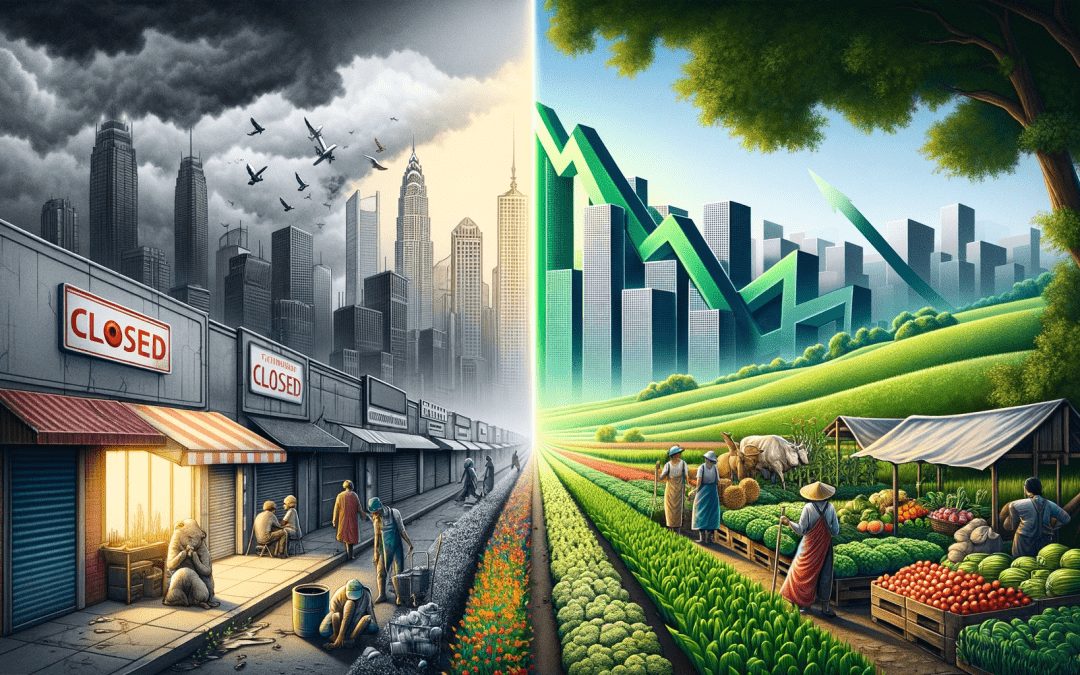
by amk139 | Nov 19, 2023 | Dashboard
Lebanon’s economy witnessed a significant downturn starting in 2018, with its GDP plummeting from $54.9 billion in 2018 to $23.1 billion in 2021. This sharp decline underscored the urgent need for innovative and sustainable solutions to rejuvenate the nation’s economic framework.
The Crisis in Numbers
The financial crisis in Lebanon manifested in various alarming indicators. The country’s GDP annual growth rate took a nosedive from -1.88% in 2018 to a staggering -21.89% in 2020. This drastic reduction pointed towards a severe contraction in economic activities, investments, and consumption. Further exacerbating the situation was the soaring inflation rate, which reached 154.8% in 2020, eroding the purchasing power of the Lebanese people, destabilizing savings, and deepening economic hardships.
Agriculture: A Beacon of Hope
In the midst of this crisis, a potential solution emerged: leveraging Lebanon’s arable land, which constitutes 13.64% of the country’s total land area. Despite a slight increase in arable land over the past decade, the contribution of agriculture to Lebanon’s GDP witnessed a decline in 2020, signaling an underutilization of this vital resource.
Revitalizing Through Agricultural Enhancement
The proposed solution focuses on enhancing agricultural production. This can be achieved by diversifying crop production, adopting modern agricultural practices, and providing robust support to local farmers. Historically, the agricultural sector has received limited attention from credit bank managers due to perceived risks. Therefore, government incentives and subsidies could play a crucial role in encouraging agricultural growth and exports, thereby aiding in job creation and indirectly boosting the country’s GDP.
Sustainable Practices and Unique Opportunities
Lebanon’s diverse geography and microclimates offer a unique advantage for cultivating a variety of crops. The country’s rich agricultural heritage, featuring culturally significant crop varieties, coupled with sustainable farming practices, enhances the quality and marketability of its produce. The export potential of these unique crops holds promise for stimulating economic growth and fostering regional trade cooperation.
Concrete Steps Forward
Findings suggest that Lebanon’s agricultural sector harbors substantial growth potential, which remains largely untapped. Key recommendations include comprehensive agricultural policy reforms, investment in infrastructure, and promotion of sustainable practices. A collaborative approach involving the government, private sector, and international organizations is essential to effectively implement these recommendations.
Conclusion: A Vision for Recovery
Lebanon stands at a critical juncture where investing in agricultural production and harnessing the potential of its arable land can serve as a cornerstone for economic recovery. This strategy not only aims to enhance the country’s food exports and optimize resource use but also addresses the pressing issues of unemployment and GDP growth.
In essence, Lebanon’s journey towards economic resilience can be significantly bolstered by a strategic pivot to agriculture, tapping into the nation’s inherent strengths and fostering a sustainable and prosperous future.
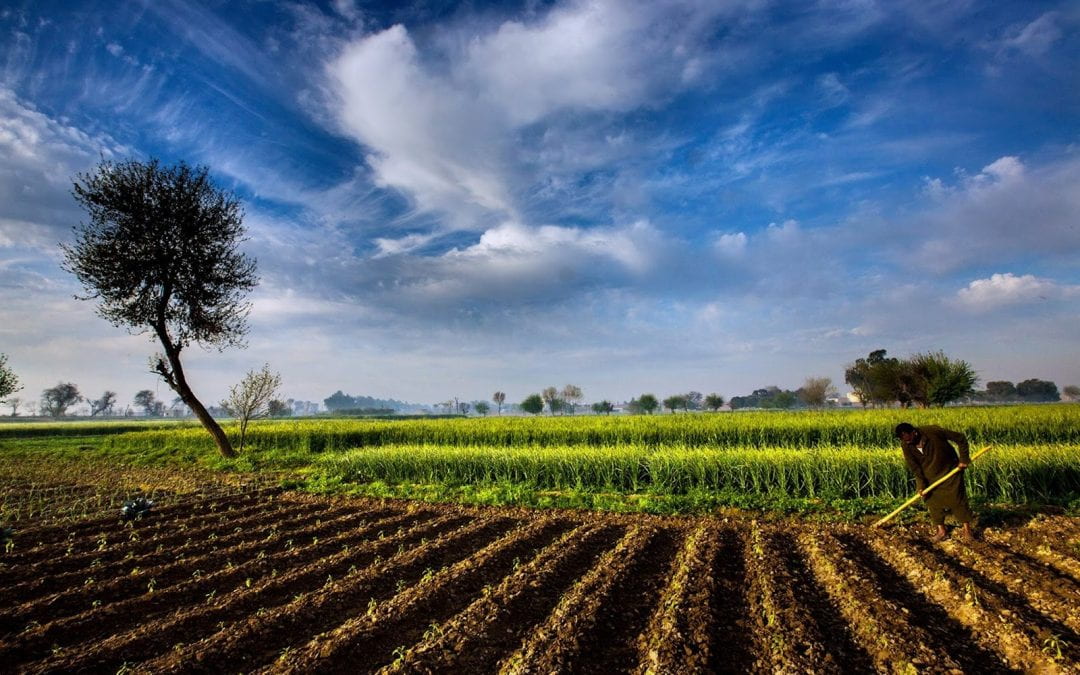
by hhk25 | Nov 8, 2023 | Uncategorized
A world where economic diversification is often seen as the path to financial stability, Lebanon stands out as a nation that has primarily relied on non-agricultural sectors for its economic sustenance. Despite its rich agricultural potential, the country has chosen to prioritize other industries. As Lebanon grapples with a severe economic crisis, it’s crucial to examine the consequences of this strategy and consider whether a renewed focus on agriculture could offer a more resilient path forward.
The main problem Lebanon is currently facing!
- Lebanon is currently not placing sufficient emphasis on the agriculture and aquaculture sectors as potential revenue sources.
- This neglect comes at a time of economic hardship, marked by a consistent decline in GDP over the years.
Problem Evidence:
- Despite the presence of fertile land for agriculture and planting, there is a notable absence of qualified and active employees in this sector, as evidenced by the consistent decline in the percentage of the workforce engaged in agriculture over the years. (the percentage decreases from 5.3%in 2000 to 3.8% in 2021 low percentage of the total employment)
- the contributions of forestry and aquaculture to the GDP have been on a continuous decline. (The percentage decreased from 6.3% in 2000 to 1.4% in 2021, indicating a relatively low contribution)
- Lebanon’s GDP growth has been consistently decreasing over the years, reaching a troubling -7% in 2021.
Potential solutions
- Placing greater emphasis on the agriculture and aquaculture sectors by providing support to local farmers and expanding cultivation areas to meet domestic demands while also generating surplus for export.
- Additionally, increasing the number of professionals in this field can be achieved by encouraging universities to prioritize agriculture-related majors and motivating students to pursue studies in this area.
This will result in:
- Increased revenue generation and improvements in Lebanon’s GDP after expanding cultivation areas and supporting the agriculture and aquaculture sectors.
Real life success story:
In the summer of 2023, two Lebanese citizens seized the opportunity to cultivate a green, organic farm in the fertile lands of southern Lebanon. Taking advantage of the region’s fertile soil, expansive agricultural land, and favorable weather conditions, they cultivated a variety of fruits and vegetables.
With an initial investment of $1,500, they managed to yield a net profit of $5,000 in just four months. This success story highlights the untapped potential of agriculture and organic farming in Lebanon.
The successful cultivation they were able to get!!!

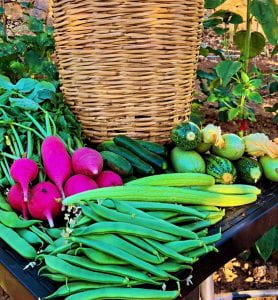

This solution is validated by the real case example presented at the beginning:
Based on the real-life example, if Lebanon gave more importance to the agriculture sector, this would lead to an increase in domestic production. This, in turn, could serve as a partial solution to the economic and financial crisis the country is facing. Moreover, it would also create more employment opportunities for Lebanese citizens, thereby contributing to a more sustainable and diversified economy. Emphasizing the agriculture sector can play a vital role in bolstering the nation’s economic stability and reducing its reliance on other sectors.
finally, emphasizing agriculture in Lebanon as a means of economic revitalization directly supports SDG 8’s objectives by creating decent work, fostering sustainable economic growth, promoting economic diversification, and facilitating skills development in the agricultural sector.







